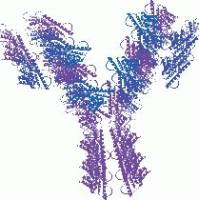With the advent of knockout pigs for α1,3-galactosyltransferease (GalT-KO, which lack a cell-surface antigen to which humans have preformed antibodies), investigators have extended the survival of life-supporting xenorenal grafts. However, despite these increases, nonhuman primates transplanted with GalT-KO renal grafts are susceptible to anti-donor T-cell responses that are strong or stronger than allogeneic responses. In order to prevent rejection, recipients must be subjected to morbidly high levels of immunosuppression. For these reasons, our laboratory has attempted to develop novel methods of xenogeneic tolerance using vascularized porcine thymic grafts in order to reteach the recipient’s immune system to accept the xenogeneic organ as self. These strategies, largely developed by Dr. Kazuhiko Yamada, involve the co-transplantation of a vascularized donor thymus with a kidney. This has been successfully done in two ways. The first method involves the preparation of a composite tissue “thymokidney” and the second utilizes the transplantation of an isolated vascularized thymic lobe. Both strategies involve the transplantation of fully vascularized thymic tissue at the time of xenotransplantation, a fact which is crucial for function of the thymic tissue immediately after xenografting and reeducation of recipient T-cells. These strategies have successfully induced tolerance across fully allogeneic models in miniature swine and prolonged graft survival in our pig-to-baboon model of life-supporting xenotransplantation to greater than 80 days with in vitro evidence of donor-specific unresponsiveness. Although it is too early for the development of clinical renal xenotransplantation protocols, this chapter describes the authors’ unique experience with one of the most promising preclinical large-animal models of xenotransplantation. Furthermore, understanding the importance and measurement of T-cell responses in xenotransplantation is contingent upon a functional knowledge of these procedures.






